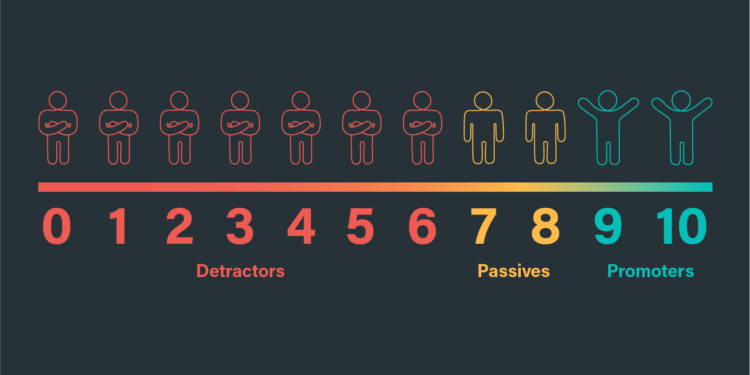As a lawyer, you’re an expert on the practice of law—but are you taking the time to track what’s important when it comes to guiding the success of your firm? Law firm KPIs, or Key Performance Indicators, can help. They can help you answer questions like:
- Do you know which attorney or which client is contributing to or reducing your profits?
- Do you know which marketing expenses lead to the most valuable clients?
- Are your clients happy?
Monitoring the performance of pivotal aspects of your firm can make a major impact on your firm’s revenues, growth, and overall success. But to succeed in our changing legal landscape, you must evolve what and how you measure.
By planning, selecting, measuring, and analyzing law firm KPIs specific to your business, you’ll be better able to make data-driven decisions and informed changes to improve your practice.
In the following guide, we’ll explore how using law firm KPIs impacts your law firm’s success, and how to pick the right KPIs for your practice’s unique situation. We’ve also assembled a vast list of potential law firm KPIs to manage—so you’ll have plenty of ideas to bring back to your firm.
Why are Law Firm KPIs valuable?
Nowadays, you hear every entrepreneur and investor saying “KPI”—so much that you might think of “KPI” as merely a buzzword. But what exactly are KPIs, and why are they important?
Key Performance Indicators, or just “KPIs,” are business metrics that evaluate an organization’s performance and success. KPIs give you the data and knowledge to answer critical questions, and they should be measurable, specific, and targeted to the unique goals of a business.
By learning to pinpoint, measure, and leverage specific performance indicators, law firm KPIs provide:
Measurable performance
There’s a big difference between simply collecting data and analyzing data. If you want to use data to determine if you’ve performed well or not, you need to first identify what you’re trying to achieve. By identifying and tracking goals for performance indicators (for example, the KPI of monthly revenue), you can better assess how your firm is performing.
Accountability
If you haven’t identified what KPIs to track, it’s difficult to determine who or what is responsible for wins or losses at your firm—which in turn makes it difficult to replicate or avoid certain results. Selecting and monitoring specific performance indicators creates a clean line of accountability at your firm.
Predictability
Without setting and tracking KPIs, you’re often left to speculate over why things are going wrong (or right) within your firm. With KPIs, you can track specifics over time, making it easier to predict results for what will work in the future.
Easier tracking
Once you’ve established a system for monitoring your law firm KPIs, upkeep is relatively simple. It can be as easy as assigning a staff member to input the numbers for each predetermined KPI once a month. Then, you can set aside a block of time for yourself to analyze the results, identify patterns (good and bad), and find opportunities for adjustment.
When using a practice management software like Clio to track all of your cases, contacts, and billing in one place, one of the advantages is that it’s really easy to run reports to get the information you need to track your most important KPIs.
62 law firm KPIs to measure
It’s true what they say: What gets measured, gets managed.
Now that it’s clear why data-driven KPIs are critical to success, read on for our list of KPIs to measure, and manage, at your law firm (Note: for each KPI, set a predetermined time period, i.e., per previous month or year, in which to keep track).
Whichever law firm KPIs you choose to use, it’s important to keep in mind that none of these metrics mean anything out of context. The type of practice, firm, and lawyer lifestyle objectives all factor into setting the targets to evaluate these numbers.
Marketing KPIs
Businesses and law firms alike fail because they pay out more than they bring in. Measuring more than the traditional billable hour metrics can help your firm better understand its current and potential monetary situation.
Here are a few marketing KPIs to consider:
- Number of marketing actions taken
- Marketing budget ratio (the ratio of the total marketing spend to the total fees billed)
- Marketing cost per client (the ratio of the total marketing spent to the number of clients billed)
- Firm website traffic
- Email marketing performance
- Website landing page conversions
Client acquisition KPIs
New clients are vital to the success of your law firm—but finding them is a complex process.
Consider using some of the following client acquisition KPIs to show you what’s working for your firm:
- Cost of acquiring a new client
- Number of new cases/matters opened
- Number of new clients
- The number of new clients by source (referral, website, review site, etc.)
- Estimated average value of each new case
- Number of consultation appointments set
- The number of potential new clients who showed up to their consultation appointments
- Number of potential clients converted into clients
Client development KPIs
Once you have a client, what do you do to develop your relationship with them? How efficiently are you resolving their cases?
To get a better understanding of your client base, try adding some of the following client development KPIs to your assessment roster:
- Number of cases/matters closed
- Average value of cases closed
- Client growth rates
- Dormant client rates (the ratio of clients with no recent matters to the number of total clients)
- Average fee per client
- Average fee per new client
- Growth in fees for top clients
- Practice areas per client
- Number of lawyers per client
- Number of matters per client
Client satisfaction KPIs
Measuring client satisfaction is a new concept for the legal industry, but knowing what you can improve upon—based on solid feedback—is critical to business success, today.
Here are some performance indicators to help you evaluate client satisfaction:
- Number of client referrals
- Client satisfaction scores (this could be through a manual survey or software)
- Client retention rates
Productivity KPIs
An efficient law firm is a profitable law firm—yet productivity is a huge issue for most, with legal professionals billing an average of less than three hours a day, according to the latest Legal Trend Report.
By tracking your firm’s productivity, you can locate areas where time is being wasted. By doing so, you can identify areas where time can be redirected to revenue-creating opportunities.
Here are some law firm KPIs to consider when it comes to productivity:
- Number of billable hours
- Ratio of billed hours compared to non-billable hours worked
- Number of unbilled days
- Number of uncollected days
- Utilization rate (number of billable hours worked divided by the number of hours in the workday)
- Realization rate (number of billable hours invoiced divided by the number of billable hours worked)
- Collection rate (number of hours collected divided by the number of hours invoiced)
- Lockup (a new metric covered in the 2023 Legal Trends Report)
If you’re using Clio Manage, the Firm Dashboard captures and tracks your firm’s utilization, realization, and collection rates for you—putting these KPIs at your fingertips so you can quickly and regularly gain insights and track productivity for your firm.
Individual Performance KPIs
While law firm KPIs are useful for measuring the overall success and growth of your firm, you might also want to track performance for individual members of your team—whether for yourself or for staff members. These individual performance KPIs could include metrics like:
- Monthly expenses
- Average bill rate
- Average work rate
- Percentage of partner hours
- Number of matters opened
- The number of billable hours per legal assistant
- Number of matters referred to the firm
- Originating revenue referred to the firm
- Number of tasks completed
Financial KPIs
Of course, financials, profitability, and margins are central to the success or failure of your law firm—so pay special attention to the following KPIs:
- Revenue billed per month
- Realization rate (amount billed as a proportion of number of billable hours worked)
- Revenue collected per month
- Collection rate (amount collected as a proportion of the amount billed)
- Amount of firm debt (lines of credit, credit cards, loans, etc.)
- Current run rate (projected annual revenue based on the past three months)
- Current anticipated annual costs (total amount of anticipated annual costs, including salaries, for a year, based on the last three month’s costs)
- Difference between your current run rate and current anticipated annual costs
- Operating account balance
- Amount of accounts receivable (AR) outstanding
- Age of accounts receivable
- Net income as a percentage of revenue
You can also look at your average:
- Net overhead
- Fee per matter
- Fee per new matter
- Billed rate
- Amount of revenue per square foot of office space
- Revenue per employee
- Amount of revenue per matter
Firm culture KPIs
When looking at your law firm KPIs, you might want to consider looking beyond revenues and clients, and looking inwards to your firm culture.
Firm culture KPIs can offer valuable insights on the health of your organization that might otherwise be overlooked—which is important, as office culture can have an impact on clients, and thus your overall business.
- Employee satisfaction scores
- Employee turnover rates
You may like these posts
How to choose the best KPIs for your firm
It’s all well and good to know that you want to measure performance to assess your firm’s strengths, but—with seemingly endless areas to assess—how do you decide which specific KPIs are most valuable for your law firm?
Remember that not all KPIs are useful for your firm. Trying to measure every performance indicator available is overwhelming, needlessly time-consuming, and counterproductive. With this in mind—before you look at which firm-specific KPIs you want to measure—you should first think about your practice’s unique overall goals, and how your firm measures success.
Here are a few questions to consider before looking at specific KPIs:
1. What do you need to measure?
When it comes to metrics you can measure, the possibilities are endless. Start by deciding what type of information provides valuable insight into your business’s performance and what data is needed in order to give you that information.
2. What data do you already have?
You can’t measure what you don’t track. The first step in establishing your KPIs is looking at the data you already have available in your firm’s practice management system.
- Make an inventory of the data being collected.
- Determine if there are any gaps between what you have and what you need.
- Check if your firm is using systems that are integrated with each other, so that pulling figures is streamlined.
- You will most likely have to create a spreadsheet for all your metrics.
3. What are your targets?
Are you doing criminal defense work where you hope that the client is only with you once? Or are you doing intellectual property work that can be repeated over the years? What is the lifetime value of every client?
Every firm has to set their own targets before choosing KPIs to measure, because they are unique to your practice. For example, your target for the cost of client acquisition depends on the type of law and the return on investment per client.
6 Steps to using Law Firm KPIs
Now that you have a few ideas for which KPIs you want to monitor at your firm, what do you need to do to actually use them to your advantage?
Try adopting the old management model of “Plan, Do, Check, Act.” Plan to gather the data for your KPIs. Once you’ve completed and analyzed these KPIs, take corrective action and then repeat this monthly.
Essentially, you want to follow these six steps:
- Pick KPIs relevant to your firm’s goals. Make sure you’re clear on what each KPI means, and why that’s important to your firm’s goals.
- Set targets. Ensure your targets are measurable and that they’re based on your firm’s goals.
- Track data for each KPI. While some KPIs might instantly reveal actionable insights, most KPIs require a few months of data to spot trends.
- Measure the results. Run your KPI reports monthly and analyze the reports promptly, so you can make the appropriate changes if needed.
- Make decisions. Once armed with the information from your law firm KPIs, you can take corrective action based on your findings. The key here is to keep your analysis and action aligned with your firm’s goals.
- Repeat the cycle. Your work isn’t complete once you’ve acted on the data you’ve collected. You’ll want to revisit your KPIs to ensure that you’re tracking the right metrics, that you’ve set the right targets, and to see whether your efforts had any impact on the results you set out to improve.
Conclusion
Integrating KPIs into your business planning allows you to create a customized dashboard for monitoring and evolving the success of your law firm. By setting specific targets and then tracking and measuring key performance indicators, you can empower yourself to make more effective decisions on behalf of your law firm, clients, and staff.
What is KPI in law?
| A KPI—Key Performance Indicator—is a measurable goal that law firms use to assess their performance. For example, common KPIs in law include percentage of cases won, client satisfaction, billable hours, and realization rate. Focusing on clearly-defined KPIs ensures law firms focus on what truly matters. | |
How do you measure success in a law firm?
Law firms can measure success in several ways. Some firms might consider revenue the most important metric, while others may focus more heavily on client satisfaction/retention or the number of cases won. However, these aren’t mutually exclusive—they’re all good markers of law firm success.
How do law firms measure productivity?
There are several ways law firms measure productivity. These might include the number of hours billed, revenue generated per year, the number of cases resolved, the utilization rate per attorney, the speed and accuracy of document preparation, the number of new clients acquired, or the firm’s overall profitability.
We published this blog post in July 2019. Last updated: .
Categorized in: Technology







